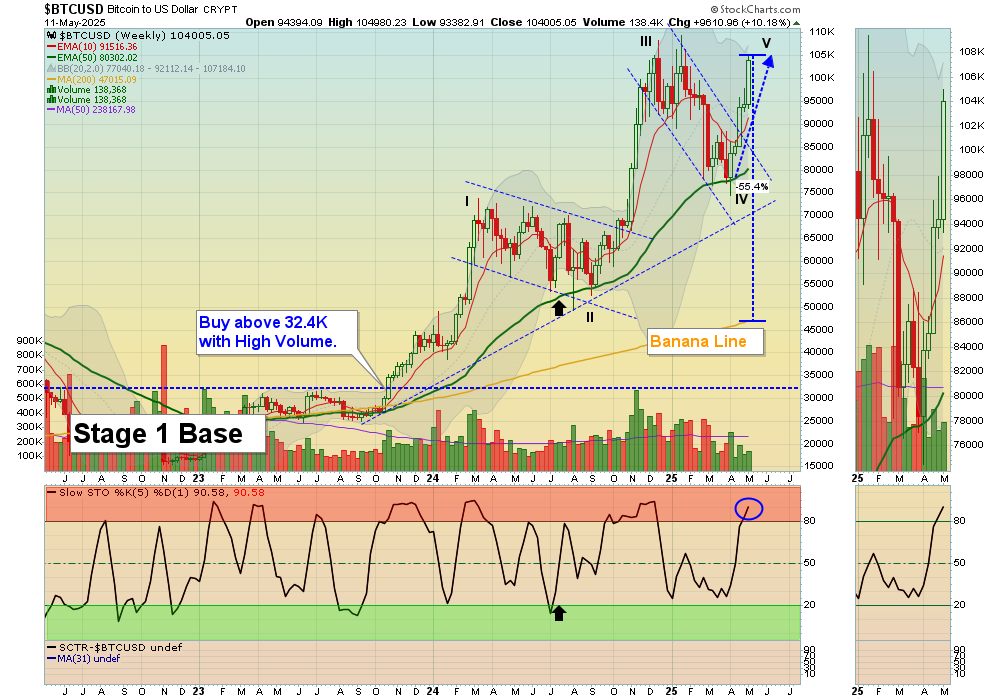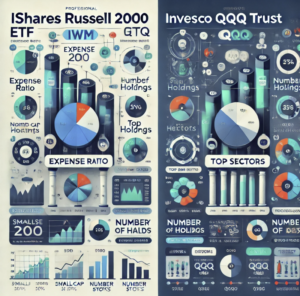
By AbovetheGreenLine
Updated February 2, 2025
In the dynamic world of investment options, exchange-traded funds (ETFs) remain a popular choice for both beginner and experienced investors, offering benefits like diversification and liquidity. Among the plethora of ETF options, IWM and SPY have garnered considerable attention for their distinct strategies and performance metrics. Understanding the nuances within these two funds can be crucial for informed decision-making.
IWM, which tracks the Russell 2000 Index, primarily focuses on small-cap U.S. equities, while SPY tracks the S&P 500 Index, giving investors exposure to large-cap stocks. Each ETF offers unique advantages and risks associated with their market segments, making a side-by-side analysis imperative for potential investors. This article will delve into the historical performance, sector allocations, market exposure, and risk factors associated with both ETFs.
By examining aspects like volatility, expense ratios, and top holdings, this comparison will provide valuable insights for those looking to enhance their investment strategies. Ultimately, our analysis aims to equip investors with a comprehensive understanding of IWM and SPY, aiding them in navigating their ETF investment choices effectively.
Performance Analysis
In comparing the iShares Russell 2000 ETF (IWM) and the SPDR S&P 500 ETF Trust (SPY), it’s critical to assess their respective performances. Over various time frames, SPY generally offers superior returns. This analysis evaluates historical performance, risk-adjusted returns, and their behavior during different market conditions.
Historical Performance of IWM
The iShares Russell 2000 ETF, which targets small-cap stocks, has had varying performance over designated periods. As of the current year, IWM achieved a relatively modest year-to-date return of 12.02%, lagging behind SPY’s more impressive returns. Over a 10-year span, IWM delivers an annualized return of 9.04%. Furthermore, its 1-year return stands at 18.64%, compared to SPY’s 27.86%, marking a 9.22% performance discrepancy. Its 3-year average return is a mere 0.11%, illustrating a notable gap when contrasted with SPY’s 8.87% over the same duration. Over five years, IWM’s returns reached 9.62%, lesser than SPY’s 15.9%.
Historical Performance of SPY
Launched in January 1993, SPY is designed to emulate the S&P 500 Index reflecting large-cap U.S. equities. Over the past decade, SPY posted an annualized return of 14.01%. On a year-to-date basis, SPY managed to garner a 24.09% return, surpassing IWM significantly. Its 1-year return is notable, reaching a high of 37.25%, once again outperforming IWM. Furthermore, SPY exhibits a stronger risk-adjusted performance, indicated by a Sharpe Ratio of 2.94, as opposed to IWM’s 1.47.
SPY vs IWM: ETF Performance in Bull and Bear Markets
SPY differs from IWM due to its focus on larger companies reflected in the S&P 500 Index. It generally provides more stable returns during market volatility. Conversely, IWM, which follows the Russell 2000 Index, comprising smaller, more economically sensitive companies, can be more volatile in market downturns. The high correlation of 0.86 between these ETFs signals limited diversification benefits when both are included in a portfolio, especially during economic downturns.
Overall, when weighing SPY vs IWM, SPY has demonstrated a stronger performance record across different metrics and time frames, supporting larger-cap investment strategies. In contrast, IWM, while offering exposure to smaller-cap stocks, tends to underperform in both returns and risk-adjusted metrics. Investors may consider these factors aligned with their investment objectives and risk tolerance when selecting the appropriate ETF for their portfolio.
Sector Allocations
Analyzing sector allocations is essential in understanding the differences between SPY and IWM. SPY offers broad exposure to large-cap U.S. companies spanning sectors such as technology, healthcare, finance, and consumer goods. In contrast, IWM focuses on smaller companies, often in sectors like industrials, consumer discretionary, and materials. These allocations impact performance and risk, so investors must align them with their financial goals and risk tolerance. Evaluating these differences helps in choosing the fund that best fits one’s investment strategy.
Sector Breakdown of IWM
IWM tracks the Russell 2000 Index, predominantly consisting of small-cap U.S. stocks. Key sectors in IWM include financials, healthcare, and information technology. By investing in smaller companies, IWM provides exposure to market segments different from broader ETFs. The performance and risk profile are shaped by the dynamics in small-cap industries. Understanding IWM’s sector breakdown aids investors in gauging diversification and aligning their portfolios with opportunities in small-cap stocks.
Sector Breakdown of SPY
SPY replicates the performance of the S&P 500 Index, covering a wide range of sectors and industries. Key sectors in SPY include technology, healthcare, and consumer discretionary, offering broad coverage of large-cap U.S. stocks. The fund consists of major U.S. public companies, influencing performance within these sectors. By focusing on large firms, SPY provides exposure to well-established economic sectors, serving as a benchmark for understanding broader market trends. This diversification makes SPY a critical tool for market trend assessments in the U.S. equity landscape.
Comparison of Market Exposure
SPY, the SPDR S&P 500 ETF Trust, provides investors with a broad exposure to large-cap U.S. companies, spanning diverse sectors like technology, healthcare, finance, and consumer goods. It seeks to replicate the S&P 500 Index’s performance, which is composed of 500 significant U.S. stocks. This comprehensive coverage offers stability and potential for long-term growth.
In contrast, IWM, the iShares Russell 2000 ETF, concentrates on small-cap companies in the U.S. market. It targets industries such as industrials, consumer discretionary, and materials by tracking the performance of the Russell 2000 Index. With a portfolio of approximately 2,000 small-cap stocks, IWM offers investors opportunities for potentially higher growth but comes with increased volatility.
The different approaches of SPY and IWM lead to distinct risk and return profiles. SPY’s large-cap focus typically results in lower volatility and steadier performance, catering to risk-averse investors. Meanwhile, IWM’s small-cap orientation can appeal to those with a higher risk tolerance seeking higher returns. Each ETF serves diverse investment strategies, making their comparison essential for portfolio diversification decisions.
Risk Factors
SPY and IWM, as exchange-traded funds, cater to different market segments with distinct risk characteristics. Investors must evaluate their risk tolerance before investing in either ETF. SPY, with its focus on large-cap stocks, generally offers lower volatility and is suited for risk-averse investors seeking stability. In contrast, IWM targets small-cap stocks, which historically show higher realized volatility, making it attractive to those with a higher risk tolerance pursuing higher returns. The correlation between small-cap and large-cap stocks remains high, especially during market stress, limiting diversification benefits.
Volatility Comparison
Volatility is a crucial factor when comparing IWM and SPY. IWM has a higher volatility of 4.35%, reflecting more significant price fluctuations than SPY’s volatility of 2.82%. Since 2000, small-cap stocks, represented by IWM, have exhibited higher volatility than large-cap stocks like those in SPY. This increased volatility in IWM makes it riskier based on price movements. A rolling one-month volatility chart for both ETFs would highlight their differing price behaviors over time. Investors should use this volatility comparison to understand the risk levels associated with small-cap vs. large-cap ETFs.
Drawdown Risks
IWM indicates higher drawdown risks with a lower Sharpe ratio of 1.47 compared to SPY’s 2.94, signaling higher risk relative to return. The ETF also has a higher turnover rate of 18.00 versus SPY’s 2.00, implying more frequent trading and potential market exposure. SPY’s higher Calmar ratio of 3.13 compared to IWM’s 1.01 suggests a more favorable return-to-drawdown risk profile for SPY. Additionally, the Martin ratio for IWM at 8.03 points to significant drawdown risks, as opposed to SPY’s Martin ratio of 18.26, indicating safer downturn performance. The Omega ratio further underscores heightened drawdown risk in IWM at 1.25 against SPY’s 1.54.
Expense Ratios and Dividend Yields
In the world of exchange-traded funds (ETFs), expense ratios and dividend yields are critical factors that can influence investment decisions. The iShares Russell 2000 ETF (IWM) and the S&P 500 SPDR (SPY) are popular ETFs that track different market indices, each with differing expense ratios and dividend yield profiles. Understanding these elements can provide valuable insights into your investment strategy, whether you are a seasoned investor or an individual investor exploring options.
Expense Ratio Comparison
IWM has an expense ratio of 0.19%, compared to SPY’s lower rate of 0.09%. Both are considered low-cost, especially relative to the broader market range of 0.3% to 0.9%. However, funds tracking the Russell 2000 index, such as IWM, generally have higher fees, potentially due to more active portfolio management. These ETFs remain affordable options within the financial instrument spectrum, providing a cost-effective way to diversify asset allocation circles.
Impact of Fees on Returns
Expense ratios directly impact ETF returns by representing the percentage of fund expenses as a portion of total assets under management. Lower fees, like those of SPY, often translate to better net performance due to diminished expenditures over time. As such, high fees can undermine returns, making the comparison between IWM at 0.19% and SPY at 0.09% significant for investors evaluating their investment advisory services and choices.
Dividend Yield of IWM
The iShares Russell 2000 ETF (IWM) boasts an annual dividend yield of approximately 12.115%. It has a record of delivering dividends 25 times annually, contributing to investors who prioritize regular income. Since 2000, IWM has consistently increased its dividend payouts, illustrating a growth trend in distributions and reflecting potential for future investment strategies focused on small-cap stocks.
Dividend Yield of SPY
The S&P 500 SPDR (SPY) stands out with a higher annual dividend yield of 23.129% compared to IWM. Its regular 25 annual dividend payments and significant total net assets, valued at approximately $593 billion, underpin SPY’s ability to maintain a robust dividend payout structure. Investors prioritizing income may favor SPY for its consistent historical performance in dividend distribution.
Both IWM and SPY present viable investment options, each offering distinct advantages in terms of expense ratios and dividend yields. While SPY provides a higher yield and lower costs, IWM’s focus on small-cap stocks offers unique diversification benefits within investment allocation. Analyzing these elements can assist investors in aligning their risk tolerance and objectives with the right ETF for their portfolios.
Top Holdings in Each ETF
In the world of exchange-traded funds (ETFs), the SPDR S&P 500 ETF Trust (SPY) and the iShares Russell 2000 ETF (IWM) represent significant investment opportunities in U.S. markets. SPY focuses on large-cap stocks from the S&P 500 index, featuring major companies such as Apple Inc., NVIDIA Corporation, and Microsoft Corporation. Meanwhile, IWM provides exposure to small-cap stocks by tracking the Russell 2000 Index, comprised of approximately 1,920 holdings. This breadth offers investors diversification across many sectors and companies.
Leading Holdings of IWM
IWM captures a diverse range of small-cap stocks, tracking companies within the Russell 2000 Index. With a portfolio of around 1,920 companies, IWM offers a wide net for exploring growth opportunities in smaller-capitalization stocks. This variety gives investors access to potential upside in emerging companies, setting it apart from SPY’s large-cap focus. The diverse asset allocation among smaller firms allows investors to tap into niche markets, catering to varying investment strategies and risk tolerances.
Leading Holdings of SPY
SPY is renowned for its holdings in prominent technology and consumer discretionary companies. Apple Inc. leads as the largest holding, accounting for 7.08% of SPY’s portfolio. Following closely are NVIDIA Corporation and Microsoft Corporation, comprising 6.84% and 6.27%, respectively, of the ETF’s total assets. SPY also invests in significant shares of Amazon.com, Inc., and Meta Platforms Inc. These companies provide stability and robust performance potential, emphasizing the ETF’s focus on large-cap stocks and its parallel exposure to key industry leaders.
Perfect Your ETF Investment Strategy With Above the Green Line
To perfect your ETF investment strategy, it’s essential to understand the key differences between IWM and SPY ETFs. SPDR S&P 500 ETF Trust (SPY) and iShares Russell 2000 (IWM) serve distinct purposes in an investment portfolio. SPY targets large-cap stocks, boasting a sizable $593 billion net asset base and a higher annual dividend yield of 23.129%. In contrast, IWM focuses on small-cap stocks with $69.6 billion in net assets, and a dividend yield of 12.115%.
While SPY’s Sharpe Ratio of 2.94 suggests superior risk-adjusted returns compared to IWM’s 1.47, both ETFs have unique traits. IWM exhibits a higher turnover rate of 18.00, indicating more active portfolio management, against SPY’s turnover of 2.00.
For investors mindful of expense ratios, differing tracking methodologies, and portfolio dynamics, choosing between these ETFs should align with personal financial goals and risk tolerance. Balancing these factors can optimize investment strategies in ever-evolving etf asset allocation circles. Join Above the Green Line today and learn how to perfect your ETF investment strategy.






